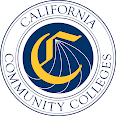
In April 2020, the California Community College Chancellor’s Office (CCCCO) announced that all classes offered online starting Summer 2020 would be considered distance education — even classes offered because of an emergency campus closure. As a result, Mt. SAC needs all online courses to have Distance Learning Amendment forms submitted for them by the end of the year (December 31, 2020).
Why Distance Learning Amendment Forms?
Where Do I Get the Form?
Do you want to offer the course online in the future? You can either submit the DL Amendment form via WebCMS or via the Smartsheet.
Tips for Filling Out the Form
This form serves as the course outline for all faculty who will teach this course online over the next 5 years. Your descriptions should serve as a general guideline on how to achieve course outcomes, regular and effective contact, and accessibility. Online faculty have academic freedom to change assignments, topic order, etc., just like in-person faculty, but everyone must teach to the Course Outline of Record.
For Lecture/Lab Topics
- Do not change or edit the topics in a lecture/lab. Column 2 requires that faculty use existing lecture and/or lab topics to show how course outcomes will be achieved. Do not change or edit the topics; this is a supplemental form (addendum), not the course outline of record (COR). If edits need to be made to the COR, do that through the standard modification process.
- Use all the topics. In some cases, you might repeat topics in more than one week. In other cases, it may mean including more than one topic per week. Do not submit weeks with no topic.
- Structure the form as if it were a 16-week class. Do this even if you normally don’t teach it over 16 weeks.
- Include a Course Orientation (CO) in the first week only Although the CO is not a stated topic, it is needed for online courses.
- Include a Final Exam (or project) in the last week unless this is a lab-only course that does not have parity. If there is a lab and the course has lab parity, include the final lab exam in the last week as well.
- Do NOT add things to the “Course Outline” column that are not actually in the course outline of record, for example, describing the activities.
About Regular and Effective Contact
On page 3 of the Distance Learning Amendment Form you will find details about the requirement for regular and effective contact to meet Title 5 Regulations. The Distance Learning Committee verifies that this requirement is met by looking for certain activities.
Professor-to-student contact is accomplished using
- AN (announcements)
- CM (communication)
- DF (discussion forum)
- FT (field trips)
- HA (homework)
- LEC (lecture)
- LO (learning objectives)
- and LAB (laboratory) if it has parity.
Each week should include multiple professor-to-student contact methods. Best practices state that courses will have AN, CM, LO every week.
Student-to-student contact is accomplished through
- DF (discussion forums) or
- GW (group work)
At least one of these should be present in the majority of weeks. There is no set time required for these activities. The times should reflect the amount of time that you consider it will take students to accomplish the activity.
Estimating Work Times
Lengthy items: TR (textbook readings), LAB, RP/EP (research papers/essay papers), HA (homework), QZ (quizzes), EX (exams), and DF (discussion forums) take more time depending on the amount of work required.
Professors do not need to be specific about what they will teach that week. The times are estimates.
It is okay to repeat a set of activities every week. (In fact, it may be most efficient to set up weekly activities, clone them for each week, and add the topics later.)
Accessibility Checklist
An accessibility checklist is included on page 9 of the Distance Learning Amendment form. This specifies how the Americans with Disabilities Act will be followed. We ask that faculty review the list and check all the checkboxes in the accessibility list to indicate your knowledge of the items that are expected to be accessible.
Checking all the boxes indicates that the course will follow accessibility guidelines. Even if you do not personally have these items in your online course, check the box to cover any other faculty who will teach the course online.
I Turned In My Form, Now What?
You completed the form. Good job! The Distance Learning Committee (DLC) will review the addendum.
 Under certain circumstances, a faculty workgroup may review the addendum and recommend approval to the DLC. One DLC approves your form, it is forwarded to Educational Design Committee (EDC) for review and approval. The DCL Coordinator contacts faculty when their course addendum is moving to EDC.
Under certain circumstances, a faculty workgroup may review the addendum and recommend approval to the DLC. One DLC approves your form, it is forwarded to Educational Design Committee (EDC) for review and approval. The DCL Coordinator contacts faculty when their course addendum is moving to EDC. 
